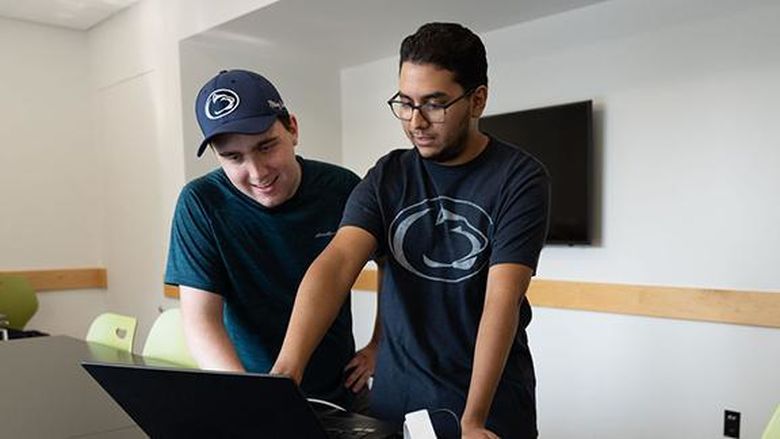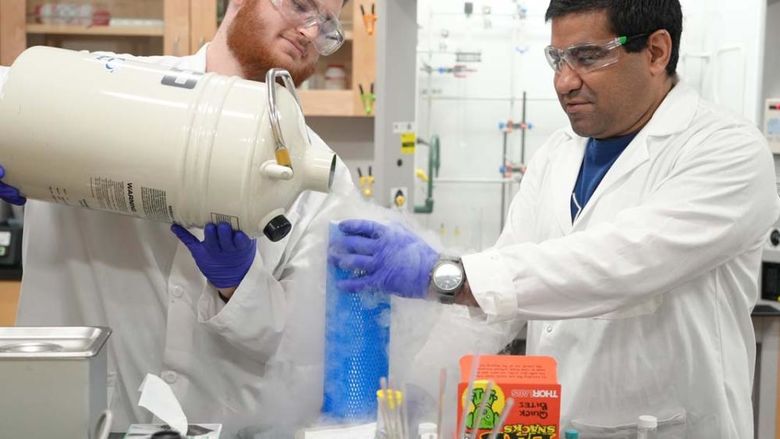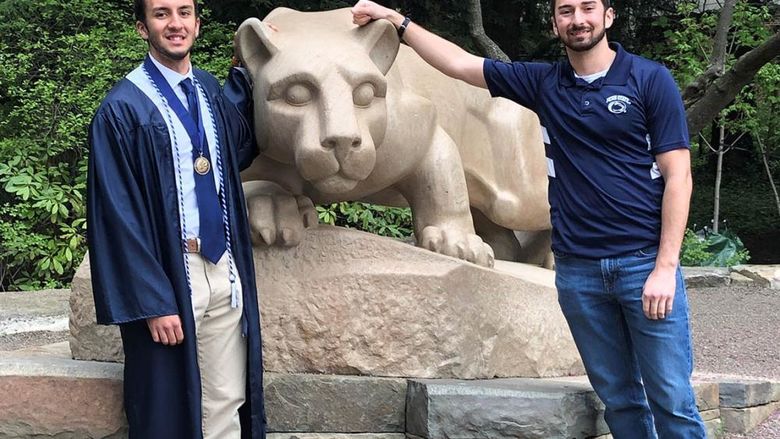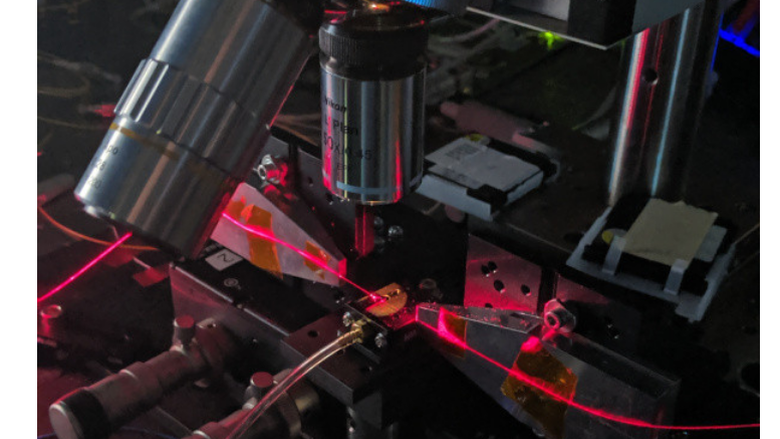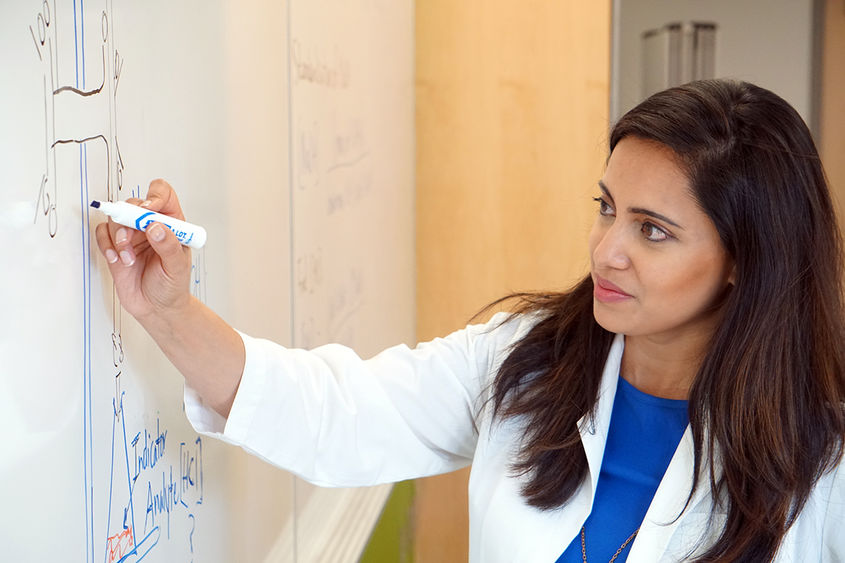
Penn State Hazleton Assistant Professor of Chemistry Eshani Lee.
HAZLETON, Pa. — Eshani Lee has always loved science — and her resume proves it. After earning a bachelor's degree in social sciences, spending two semesters in medical school, and earning advanced degrees in chemistry education and biochemistry in graduate school, she’s passing along her knowledge and love of science to undergraduate students at Penn State Hazleton.
She’s also doing research on ways to bring a more diverse pool of students into the STEM disciplines — science, technology, engineering and mathematics. Her experiences as an undergraduate and a graduate student, combined with her research, have convinced her that the language used in STEM classes can be a barrier for non-native English-speaking students.
“For me, the ultimate goal is to open up the gateway for different types of students to come into chemistry,” Lee said. “If language is a major barrier, deterring so many different people from the subject, we need to deal with that and address it in a systematic, empirical way. We need to figure out how to make [chemistry] more accessible.”
Now an assistant professor of chemistry at the Hazleton campus, Lee earned a doctoral degree in chemistry education at the University of Nevada, Las Vegas (UNLV). The program there was highly interdisciplinary, she said, requiring classes in subjects like education psychology and human subject research.
“When I started taking classes in educational research,” Lee said, “I found that there are many systematic barriers for students to do well in chemistry, in biology, in any of those introductory sciences. The STEM pipeline was leaking, and it was disproportionally turning away historically underrepresented students.”
Lee believes her social studies background contributed to a well-rounded education that set her apart from other science instructors and “opened a door” to a broader perspective on societal pressures affecting English-language learner (ELL) students.
Having been born in India, Lee said that she herself struggled with language issues as an immigrant and first-generation college student in the U.S. But she said she didn’t really realize how many of her students were struggling with academic language until she started teaching chemistry labs at UNLV.
“There’s a definite language barrier that happens when you’re sitting in a chemistry class and the professor is using technical vocabulary in a very specialized context," she explained. In the UNLV classes she was taking, too, “even my friends who were born here, even native-born students, did not fully understand what the test questions were asking them. It was clear that they didn’t know exactly what the professor was saying, or what was being asked, or what was being conveyed.”
So, at UNLV, for her dissertation, Lee started looking into the recruitment and retention of underrepresented minorities in STEM. She found that while some good research had been done on language barriers in elementary school, there was essentially nothing about college undergraduate ELL students in chemistry. In her dissertation — “Breaking the Language Barrier: Equitable Assessment in General Chemistry” — she found that students know much more than they can demonstrate on tests and that language plays a big role in how we assess students.
Now, at Penn State, Lee is the principal investigator on a project, funded by a two-year National Science Foundation (NSF) grant, titled “Breaking the Language Barrier in Chemistry Assessment.” With her collaborators, Lee will examine ways to make the questions on science course exams more accessible to diverse student populations without reducing the difficulty of the chemistry content.
That will require analyzing pilot data that Lee has already gathered on test questions and eventually modifying the questions linguistically to make them more accessible. Then, the modified test questions will be tested on undergraduate students, first at Penn State Hazleton and then at the University Park campus.
Currently, some chemistry test questions are “complicated word problems” that require students to connect math to the chemistry concepts. “Historically speaking, they bomb these items,” Lee said. “They do not understand what’s being asked. They get lost in the vocabulary and technical language.”
So, for the study, Lee and her collaborators will choose test questions that relate to basic, foundational concepts students encounter in chemistry and use a framework called the “equity framework for classroom assessments” to make the questions more accessible to a broader population of students without diluting the scientific content.
“What this framework posits is that you don’t necessarily have to eliminate the content-specific vocabulary,” Lee said. “The students understand that a term like ‘reaction’ is a chemistry word.”
The problem is often the language around the technical term and the look and organization of the question, Lee said. For instance, if it consists of large blocks of text, complex sentences, and multisyllabic words, and uses passive voice, the question might appear imposing and opaque to students.
“All that just contributes to the cognitive load,” Lee said. “We’re not trying to change the chemistry terms, necessarily, but to simplify how they’re presented, to simplify the language around them. Why say ‘utilize’ instead of just saying ‘use,’ why say ‘was manufactured’ if you can just say ‘was made’? These are the kinds of things that are making a difference.”
Lee believes it’s vital to have diverse students in chemistry “so we can have diverse perspectives on urgent global issues. People bring with them funds of knowledge from their different cultures, and sometimes we need to rely on different perspectives to make innovation possible.”
While many students in Lee’s classes may not end up majoring in chemistry, she always makes a point of telling them that “chemistry is universally present in your life. It’s embedded in every aspect of your life — in society, technology, in climate change, in so many topics right now. So if I can make them even a little more aware of how to recognize elements of chemistry behind everyday things, then I’ve done my job.”
